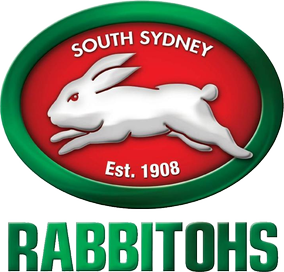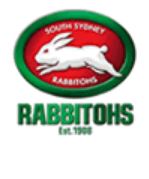It’s an alignment of people, processes, and tools toward a more unified customer focus. Multidisciplinary teams take accountability for the entire lifecycle of a product. Adopting DevOps first requires a commitment to evaluating and possibly changing or removing any teams, tools, or processes your organization currently uses. It means building the necessary infrastructure to give teams the autonomy to build, deploy, and manage their products without having to rely too heavily on external teams. This includes the practices involved in design, implementation, configuration, deployment, and maintenance of all IT infrastructure that supports an organization’s services. SRE practices are commonly found in DevOps teams, regardless of if they formally adopt them.
Retrospectives give time for team members to talk about what happened in the past couple of weeks and what they felt went right and what didn’t work for them. This allows teams to agree on processes they will employ over the coming weeks without creating too much friction because they know the processes can be modified if they end up not working in everyone’s best interest. A system like this allows teams to be more productive through the use of experimentation machine learning and ai instead of wasting too much time on theorizing. DevOps requires individuals from various backgrounds to band together as a team working on a singular goal. This kind of collaboration has been avoided in the past which created communication silos where each discipline works in their own bubble and then hands off their work to the next discipline in the development chain. Siloing creates bottlenecks and makes it easy for communication to get lost in translation.
Share this article
By standardizing tools and processes across teams, organizations can ensure consistency and streamline collaboration. A successful DevOps team should include members from various departments to ensure a holistic approach to problem-solving and collaboration. While breaking down silos is critical within the development and operations teams, it’s important to recognize that the principles of DevOps culture can be applied beyond the realm of IT. By extending the DevOps mindset to other areas of the organization, such as product management, marketing, and even human resources, businesses can foster a more collaborative, efficient, and agile environment.
- In section 4.1, we examined the importance of leadership in promoting a DevOps culture and the necessity of fostering a learning mindset throughout the organization.
- A system like this allows teams to be more productive through the use of experimentation instead of wasting too much time on theorizing.
- Automation is one of the most important DevOps practices because it enables teams to move much more quickly through the process of developing and deploying high-quality software.
- As noted below, a DevOps team is not necessarily a single stand-alone team.
- This is not just theory either; companies like Google and Spotify have successfully implemented DevOps organization structure by leveraging container technology within their own operations for years now.
- By engendering a culture of communication throughout your organization, you will empower collaboration within teams and between them that will improve development speed and product quality.
In Atlassian’s 2020 DevOps Trends survey, 99 percent of respondents said that DevOps had a positive impact on their organization. The benefits of DevOps include faster and easier releases, team efficiency, increased security, higher quality products, and consequently happier teams and customers. The DevOps lifecycle consists of eight phases representing the processes, capabilities, and tools needed for development (on the left side of the loop) and operations (on the right side of the loop). Throughout each phase, teams collaborate and communicate to maintain alignment, velocity, and quality. Site Reliability Engineering (SRE) solves operations as if it’s a software problem.
DevOps observability tutorials
In this model, a single team has shared goals with no separate functions. The reason it’s called “no ops” is because ops is so automated it’s like it doesn’t actually exist. Shana is a product marketer passionate about DevOps and what it means for teams of all shapes and sizes. She loves understanding the challenges software teams face, and building content solutions that help address those challenges. If she’s not at work, she’s likely wandering the aisles of her local Trader Joes, strolling around Golden Gate, or grabbing a beer with friends.

Stream-aligned teams are under constant pressure to deliver and respond to change quickly, making it challenging to find time for researching, learning, and practicing new skills. Even though DevOps is arguably the most efficient way to get software out the door, no one actually ever said it’s easy. Applications like Zoom, Slack, and Microsoft Teams are also necessary for teams to communicate quickly and efficiently, especially in a remote-first world. In the past, a developer could walk over to the operations team to ask about the status of an incident. Now virtual communication apps provide that same instantaneous communication. As DevOps becomes more widespread, we often hear software teams are now DevOps teams.
Atlassian Presents: Unleash
The DevOps evangelist will ensure that the responsibilities of DevOps processes are assigned to the right people. The smallest DevOps team should comprise the following people; A software developer/tester, automation engineer/automation expert, quality assurance professional, security engineer, and release manager. The granularity of the team ultimately depends on the size of the organization.

The section on Team Topologies can help you redesign your teams and interactions. We have a reliability group that manages uptime and reliability for GitLab.com, a quality department, and a distribution team, just to name a few. The way that we make all these pieces fit together is through our commitment to transparency and our visibility through the entire SDLC. But we also tweak (i.e. iterate on) this structure regularly to make everything work. It might also be helpful to insert “champions” into struggling groups; they can model behaviors and language that facilitate communication and collaboration.
Different teams require different structures, depending on the broader context of the company.
It is not just abstracting hardware capabilities but also involves other processes such as automation, orchestration, APIs, containerization, security, routing, UX design, etc. Public, private, hybrid, and multi-cloud are a few examples of popular cloud architectures. Ensure and remember that tools are not the only thing needed for the DevOps culture. Also ensure that the tools are selected based on the requirements of the operations, testing, and development needs. In the 1980’s, Jack Welsh, at the time the CEO of General Electric, introduced the idea of the “boundaryless organization” in a process that became known as GE Work-out. The focus was teams that were able to quickly make informed decisions, what people in Agile might today call self-organizing teams.
Often they are just passionate about the broader software delivery process and want to improve it. Teams filled with specialists, like software developers, are ‘Hero teams’. One highly-skilled team member manages builds, deployments, and responding to service outages. In all cases, the DevOps research and modelling covers leadership, culture, and technical practices. DevOps bakes in collaboration, with many opting for cross-functional, autonomous teams.
Top 9 Devops Engineer Skills
Using rotating roles will also help team members to better understand the entire process so they can make informed decisions regarding process changes in the future. This understanding also serves the purpose of improving lines of communication through shared knowledge and experience. Infusing your organization with a culture of communication enables your teams to have a deeper insight into the pain points each discipline can experience. This understanding makes it easier for each team member to see the whole picture which leads to shorter development times with fewer errors. Rapid deployment allows for more experimentation that will see your product constantly improving upon itself through iteration.
When culture is deeply rooted in an organization, resistance to change is a big bottleneck. As DevOps is not just a tool or a technology, it is important to see a top-down cultural shift across the organization. Teams should break down silos and find a common ground to seamlessly communicate and collaborate. It should happen right from business perspectives to deployment and maintenance across all stakeholders, departments, and stages of development.
Roles and responsibilities on DevOps teams
Version control is a necessary component of any successful implementation of maintainable development practices. It ensures that everyone working within an environment has access to the same code base at all times so they don’t step on each other’s toes while developing new features. It also helps avoid conflicts with external teams if multiple people are collaborating remotely. It depends on who’s doing which task in order to minimize the risk of duplicate work.
This approach combines development and operations teams’ expertise, enabling a more efficient and collaborative working environment. This cultural shift has redefined the landscape of software development, leading to the rapid delivery of high-quality software products. With Quality Engineering and Quality Assurance going hand in hand, QA teams are happier now as quality is not just their job, but it turns into DevOps Team responsibility. One of the most significant barriers to the adoption of DevOps practices is the traditional separation of development and operations teams.
This model works best for companies with a traditional IT group that has multiple projects and includes ops pros. It’s also good for those using a lot of cloud services or expecting to do so. And appoint a liaison to the rest of the company to make sure executives and line-of-business leaders know how DevOps is going, and so dev and ops can be part of conversations about the top corporate priorities.





































